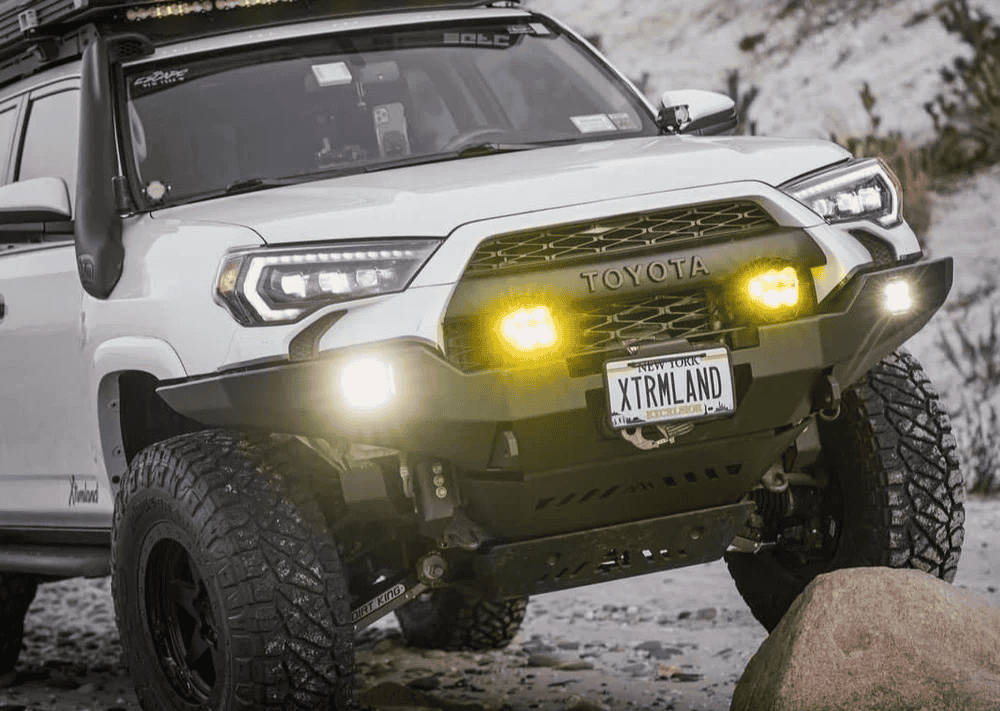Overland Vehicles

A dependable ARB air compressor setup begins with location. Choose a spot with airflow, away from exhaust heat, and high enough to avoid splash. Common choices include under seat cavities, cargo side panels, or a protected engine bay shelf. Keep the intake filter in clean air with a short, smooth hose run to reduce restriction.
Avoid direct spray zones and stone strikes. Inside body cavities, add drain paths so water cannot pool. If you mount near the engine, add reflective heat shielding and leave space around the head for cooling.
Use rubber isolators on the mounting plate to cut vibration and drone. A simple sandwich of isolators between compressor bracket and chassis panel keeps the cabin quieter and extends component life.
Use a remote intake with a serviceable filter placed in the cabin or a sealed compartment. If the setup may see water crossings, route the intake high and forward and inspect after any deep water event.
Electric compressors are only as good as their wiring. Plan for current draw, voltage drop, and safe switching. Keep runs short and use automotive grade wire and terminals that resist corrosion and heat.
Size conductors for the compressor current at continuous load. For high output units, heavy cable and a properly rated fuse or breaker should sit within a few inches of the battery positive. Ground to a clean, bare metal point on the chassis or directly to battery negative for the lowest resistance.
Drive the motor with a relay sized for startup current. Trigger the relay with an ignition source or a dedicated switch so the system cannot run unexpectedly. If you add a tank, control pressure with a matched pressure switch and include a pressure relief valve to keep the system safe.
Separate locker pressure from tire service pressure. Lockers often prefer regulated pressure, while inflation benefits from the full system output. A small regulator and water trap on the locker branch protect seals and solenoids.
Plumbing defines how fast air reaches the tire and how tidy the install looks. Focus on leak free fittings, smart routing, and easy access to couplers where you actually use them.
A compact tank gives you faster bursts for seating beads and running tools. Include a check valve between compressor and tank so air cannot backfeed on startup. A manifold simplifies distribution to front and rear quick connects and gives you ports for sensors, a gauge sender, or an auxiliary line.
If you power air lockers, tee from the manifold into a dedicated branch with the regulator set to the locker spec. Keep this branch dry by placing a water trap before the solenoids. For tire service, use abrasion resistant hose and quick connects at the front and rear bumpers so you are not dragging lines across paint.
Check fittings with a soapy water test. Tighten only as much as needed and use thread sealant suitable for pneumatic systems. Clean or replace the intake filter on a schedule, and inspect the relay, fuse, and grounds. Allow cool down periods that respect the duty cycle rating.
Tanks are helpful when you want a faster initial fill, use air tools occasionally, or need reserve volume for seating beads. Choose a tank size that fits safely under the body or inside a protected cavity. Mount with coated hardware and add a drain to remove moisture. The pressure switch should match the compressor output and tank rating, and the relief valve should be rated slightly above the switch cutout.
Use high quality hose with temperature and abrasion ratings suitable for the environment. For fittings, straight thread connections with seals reduce rework. If you use tapered thread, apply a pneumatic sealant sparingly and keep sealant away from the intake. A tiny leak can drain a tank overnight, so verify every joint before final paneling.
Onboard air works best when it is integrated like any other core system. Plan the compressor alongside batteries, inverters, and recovery gear so nothing fights for space or airflow. External quick connects at bumpers, plus a protected manifold inside, strike a good balance between access and longevity.
As you move from planning to execution, professional installation helps with routing, electrical load management, and clean integration into armor and bumpers. If you want a system that matches your rig’s mission, explore overland rigs for inspiration on complete vehicle systems that include onboard air.
A well designed ARB air compressor setup is more than a pump and a hose. It is thoughtful mounting, reliable power delivery, and air plumbing that serves lockers and tires without drama. If you are planning a full build or a targeted upgrade, our team can integrate manifolds, tank mounts, and bumper ports as part of a custom overland upfit so the system feels factory clean. Not sure which path fits your travel style and tire size? See how we approach craftsmanship and customer care at why choose OZK Customs.
Want onboard air that fills fast, runs quiet, and integrates cleanly with lockers and bumpers? OZK Customs designs and installs complete systems with proper wiring, manifolds, tanks, and protected quick connects. Tell us how you travel and we will build the right solution. Submit the form to start your build consult.
ADDRESS:
6159 E Huntsville Rd, Fayetteville, AR 72701
PHONE:
(479) 326-9200
EMAIL:
info@ozkvans.com